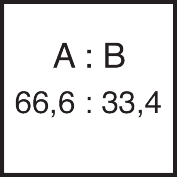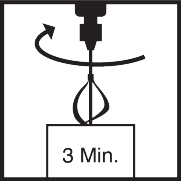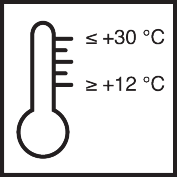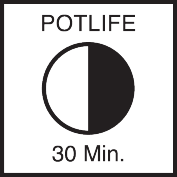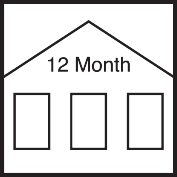Article No. 634403
Transparent epoxy resin, resistant to yellowing
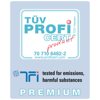
Product specifications
On delivery
Component A
Component B
Mixture
The stated values represent typical product characteristics and are not to be construed as binding product specifications.
Field of application
- Binder for decorative pebble covers
- Topcoat for blinded covers
- Fixative coat for flake coatings that completly saturate the surface
- Transparent coating
- Binder for the Remmers Metalufloor system
- System component in TÜV PROFICERT-product Interior certified systems (707106482-1)
Properties
- Resistant to yellowing
- Can be subjected to mechanical loads
- Coating compatibility test
- Contains no plasticisers, nonylphenols or alkylphenols
-
Preparation
-
Substrate requirements
The substrate must be firm, dimensionally stable, capable of bearing loads and free of loose constituents, dust, oil, grease, rubber marks and other substances that could interfere with adhesion.
A suitable Remmers epoxy primer or epoxy scratch coat must always be used.
Refer to the current Technical Data Sheet for detailed information on the single products.
-
-
Preparation
-
Combination container
Add the entire quantity of the hardener (component B) to the base compound (component A).
Mix thoroughly with a slow-speed electric mixer
(approx. 300 - 400 rpm).Pour the mixture into a separate container and mix again thoroughly.
Mix for at least 3 minutes.
Insufficient mixing is indicated by streaks forming.
-
Application
-
As a general principle, higher temperatures will reduce and lower temperatures will increase the times stated.
-
Working tools / cleaning
-
Smoothing trowel, notched trowel, squeegee, rubber scraper, epoxy roller, spiked roller, mixing apparatus, compulsory mixer if necessary
-
More detailed information can be found in the Remmers Tool Programme.
Clean tools, equipment and splashed material immediately while fresh with V 101.
Take suitable protective and waste disposal measures when cleaning.
-
Storage / shelf life
-
If stored unopened in the original container and kept cool, dry and protected from frost, min. 12 months (component A)/min. 24 months (component B).
-
Usage
-
See application examples
-
-
Application examples
-
EM
Pour the material which has been filled up to 1:12.5 parts by weight onto the primed surface and distribute, compact and level with a smoothing trowel
Per mm layer thickness:
approx. 0.16 kg/m² binder and 2.0 kg/m² Ceramix 20/30 -
TC
Pour the material on the suitable and previously prepared surface and distribute with suitable means, such as a toothed squeegee/trowel.
Afterwards roll over with a (metal) spiked roller.
When completely cured, seal e.g. with PUR Top M Plus.
Alternative substrates or system elements must be tested with regard to their suitability.
approx. 1.5 kg/m² binder
-
FFFL
Pour the material on the previously prepared surface and distribute with a suitable rubber squeegee or smoothing trowel and then roll over crosswise with an epoxy roller.
To obtain a smooth surface apply the material several times. After complete curing, apply the sealant.
approx. 0.3 kg/m² binder (depending on the blinding material used)
-
HS
Pour the material on the previously prepared surface and distribute with a suitable rubber squeegee or smoothing trowel and then roll over crosswise with an epoxy roller.
approx. 0.5 - 0.7 kg/m² binder (depending on the blinding material used)
-
-
General information
-
Unless otherwise specified, all of the values and application rates given above have been determined under laboratory conditions (20 °C). Slight deviations from these values may arise if the product is worked with on site.
Exposure to vehicles with metal or polyamide tyres as well as dynamic concentrated loads can cause faster wearing of the coating.
Abrasive mechanical loads leave traces of wear.
Upon prolonged contact with a floor covering, coloured – and especially black – rubber can cause discolouration that cannot be removed (e.g. car tyres or machine bases). Suitable polyurethane wheels or underlay mats should be used in order to avoid such discolouration. Colourants, hair dyes, bleach and disinfectants can also cause discolouration if not removed immediately.
Low temperatures during application can reduce the resistance to water. If the surfaces are exposed to water, executed the coating only at air and substrate temperatures of over 12 °C.
Epoxy resins are generally not colourfast when exposed to UV light or weather.
UV resistance can be improved with a suitable sealant.
Not suitable for application in outdoor areas.
Further notes on working, system construction and maintenance of the listed products can be found in the latest Technical Data Sheets and the Remmers system recommendations.
-
-
Disposal instructions
-
Larger quantities of leftover product should be disposed of in the original containers in accordance with the applicable regulations. Completely empty, clean containers should be recycled. Do not dispose of together with household waste. Do not allow to enter the sewage system. Do not empty into drains.
-
-
Safety / regulations
-
For professional users only!
For further information on the safety aspects of transporting, storing and handling the product and on disposal and environmental matters, please see the current Safety Data Sheet and the brochure entitled "Epoxy Resins in the Construction Industry and the Environment", issued by Deutsche Bauchemie e.V. (3rd edition 2022).
-





